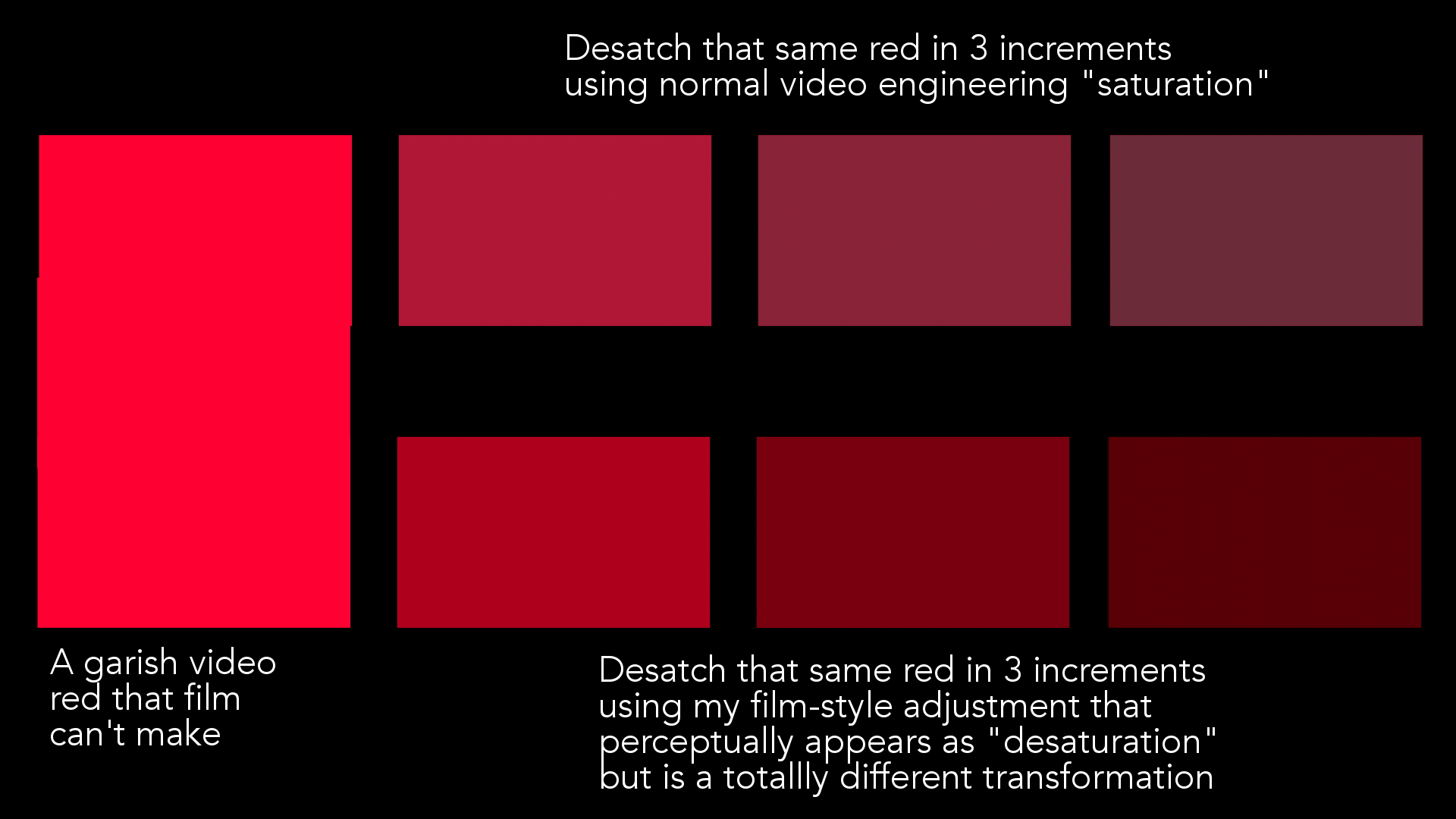I made a little visual example of “saturation." I’ve taken a garish red color that film would never make and desaturated it two different ways: first using normal “saturation” and then using my film emulation-type adjustment that feels like “saturation” but is different math.
I haven’t done any other adjustment or color correction. I’ve just applied the two different types of transforms — just as they are -- in varying amounts. (I mean, I can use that math I use to adjust “saturation” in many many different ways, but this is using it just as it’s already set up in my LUT and not adjusting it).
You can see how the video desatch makes it go grayish magenta and the film red makes it go dim and more yellow, but not washed out.
In video engineering terms (but not perceptual terms): the top row of patches are maintaining hue and brightness while only the saturation changes, while the bottom row of patches are losing brightness and are hue shifted but are maintaining saturation (all three Yedlin patches have 100% saturation in video engineering terms).
